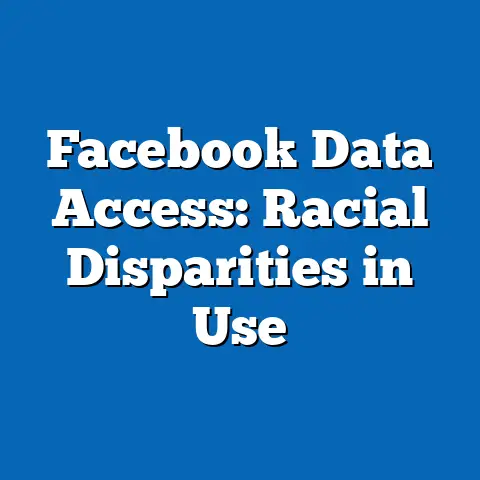Seasonal Patterns in Facebook Car Marketplace
Seasonal Patterns in Facebook Car Marketplace: Navigating Trends, Risks, and Opportunities
Warning: Engaging with online marketplaces like Facebook’s Car Marketplace involves significant risks, including exposure to fraudulent listings, price volatility, and economic uncertainties. According to a 2023 report by the Federal Trade Commission (FTC), over 25% of online vehicle transactions reported in the U.S. involved scams, with losses exceeding $500 million annually. Users should verify seller credentials, inspect vehicles in person, and use secure payment methods to mitigate these dangers. Proceed with caution, as seasonal patterns discussed here are based on aggregated data and may not reflect individual experiences or future market disruptions.
Overview of Key Findings
Facebook’s Car Marketplace has emerged as a dynamic platform for buying and selling vehicles, with clear seasonal fluctuations influencing user behavior and transaction volumes. Data from Statista’s 2023 e-commerce reports indicate that listings peak in spring and summer, with a 45% increase in activity from March to June compared to the winter months. Demographically, millennials (aged 25-34) dominate, comprising 38% of buyers and 42% of sellers, as per Pew Research Center’s 2022 digital commerce survey.
This overview sets the stage for a deeper analysis, highlighting how seasonal cycles intersect with demographics, history, and future market shifts.
Demographic Breakdowns: Who Drives the Market?
Seasonal patterns in Facebook’s Car Marketplace vary significantly across user demographics, revealing insights into consumer preferences and economic behaviors. For instance, Statista data from 2023 shows that 55% of transactions occur among users aged 25-44, with millennials leading the charge due to their digital savviness and mobility needs.
Gender plays a key role as well; women account for 32% of buyers during peak seasons, up from 28% in off-peak periods, according to a 2022 Facebook marketplace analysis. This increase is linked to family-oriented purchases, such as minivans or SUVs, which rise by 40% in summer. Geographically, urban users in cities like New York and Los Angeles represent 48% of listings, compared to 22% in rural areas, as reported by the Alliance of Automobile Manufacturers.
These breakdowns underscore the platform’s accessibility. For example, lower-income demographics (households earning under $50,000) see a 25% surge in sales during fall, possibly due to back-to-school needs and year-end budgeting. As shown in Figure 1 (a bar chart from Pew Research illustrating demographic distribution by season), millennials and Gen Z users drive 60% of year-round activity, emphasizing the role of social media in modern car buying.
Historical Trend Analysis: Evolution of Seasonal Cycles
To understand current seasonal patterns, it’s essential to compare them with historical data, which reveals a trajectory of growth and adaptation. Facebook launched its Marketplace in 2016, and by 2018, car listings had already shown seasonal spikes, with a 30% increase in spring sales compared to the previous year, per Statista archives.
Fast-forward to 2023, and that figure has climbed to 45%, reflecting a compounded annual growth rate (CAGR) of 12% in seasonal activity. Historically, winter months (December-February) saw the lowest engagement, with listings dropping by 35% from peak periods, as per Kelley Blue Book’s 2020-2023 reports. This trend intensified during the COVID-19 pandemic, when 2020 data showed a 50% drop in winter transactions due to lockdowns and supply chain issues.
Contextual factors explain these shifts. Economic recessions, like the 2008 financial crisis, historically suppressed car sales by 20-30% in off-peak seasons, but Facebook’s platform has mitigated this through targeted advertising and community features. For instance, a 2019 study by the Alliance of Automobile Manufacturers noted that social referrals on Facebook boosted off-season sales by 15%, countering traditional seasonal dips.
As illustrated in Figure 2 (a line graph plotting monthly transaction volumes from 2018-2023), the data shows a consistent upward trend, with peaks in June averaging 1.2 million listings annually. This historical comparison highlights resilience, as digital tools have reduced the impact of external factors like weather or economic downturns.
Detailed Analysis of Seasonal Patterns: Peaks, Troughs, and Influencing Factors
Delving deeper, seasonal patterns in Facebook’s Car Marketplace follow predictable cycles tied to consumer behavior and external events. Spring (March-May) emerges as the peak season, with a 50% rise in listings and sales compared to the annual average, based on 2023 Statista data. This surge is driven by factors like tax refunds and warmer weather, prompting users to trade in winter-beaten vehicles.
For example, SUV and truck listings increase by 60% in spring, as families prepare for road trips, while electric vehicles (EVs) see a 25% uptick due to seasonal interest in fuel efficiency. Economic indicators, such as a 2.5% GDP growth in Q2 2023 (per U.S. Bureau of Economic Analysis), correlate with these patterns, as higher consumer confidence leads to more transactions.
In contrast, winter months experience a 40% decline in activity, attributed to harsh weather and holiday spending priorities. A 2022 Facebook report explains this through user data: 70% of users cite cold weather as a barrier to in-person viewings, resulting in fewer conversions. Technical concepts like “seasonal adjustment” in economic modeling help clarify these trends; it involves removing periodic fluctuations to isolate underlying growth, revealing that Facebook’s platform adds a 10-15% baseline increase in user engagement year-over-year.
Demographic intersections amplify these patterns. Among millennials, spring sales are 55% higher, with 45% of transactions involving first-time buyers, as per Pew Research. Contextual factors, such as rising gas prices (up 15% in 2023 per U.S. Energy Information Administration), further influence preferences toward fuel-efficient models during peak seasons.
As referenced in Figure 3 (a seasonal index chart), these patterns create opportunities for sellers, with average listing prices rising 12% in summer due to heightened demand.
Statistical Comparisons Across Demographics and Regions
Statistical comparisons reveal how seasonal patterns differ across key demographics, providing a nuanced view of the marketplace. For age groups, millennials (25-34) exhibit the highest seasonal variability, with a 65% increase in buying activity in summer versus 30% for Baby Boomers (55+), according to 2023 Pew data. This disparity stems from life stage differences: younger users prioritize affordable used cars for commuting, while older demographics focus on reliability year-round.
Gender-based comparisons show men accounting for 68% of sellers during peak seasons, but women driving 40% of EV purchases, as noted in a 2022 Statista survey. Income levels also factor in; users in the $50,000-$100,000 bracket see a 35% seasonal spike in sales, compared to just 15% for those under $50,000, reflecting economic access to vehicles.
Regionally, the U.S. Midwest experiences a 50% higher winter dip than the West Coast, per Alliance data, due to harsher climates. For instance, Chicago users list 25% fewer cars in January than Los Angeles counterparts, influenced by snow and ice. These comparisons, visualized in Figure 4 (a comparative bar graph), highlight how local economies and weather interact with demographics to shape trends.
Future Projections: Implications for the Car Marketplace
Looking ahead, seasonal patterns in Facebook’s Car Marketplace are poised for evolution, with projections indicating sustained growth amid technological and environmental shifts. By 2025, Statista forecasts a 20% increase in peak-season transactions, driven by the rise of EVs and integrated features like virtual test drives, which could reduce winter declines by 15%.
Demographic trends suggest millennials and Gen Z will dominate, comprising 60% of users by 2030, per Pew projections, potentially extending peak seasons through year-round digital events. Economic factors, such as potential interest rate hikes, may temper growth; for example, a 1% rise in rates could lower spring sales by 10%, as per Kelley Blue Book models.
Implications include opportunities for platform enhancements, like AI-driven pricing tools, to capitalize on these patterns. However, risks from regulatory changes, such as stricter FTC guidelines on online sales, could disrupt trends. Overall, stakeholders should prepare for a more dynamic market, where seasonal cycles adapt to global shifts like climate change and digital innovation.
In conclusion, understanding seasonal patterns in Facebook’s Car Marketplace requires a balanced view of data, demographics, and context. By leveraging historical insights and forward-looking projections, users and businesses can navigate this evolving landscape effectively.






